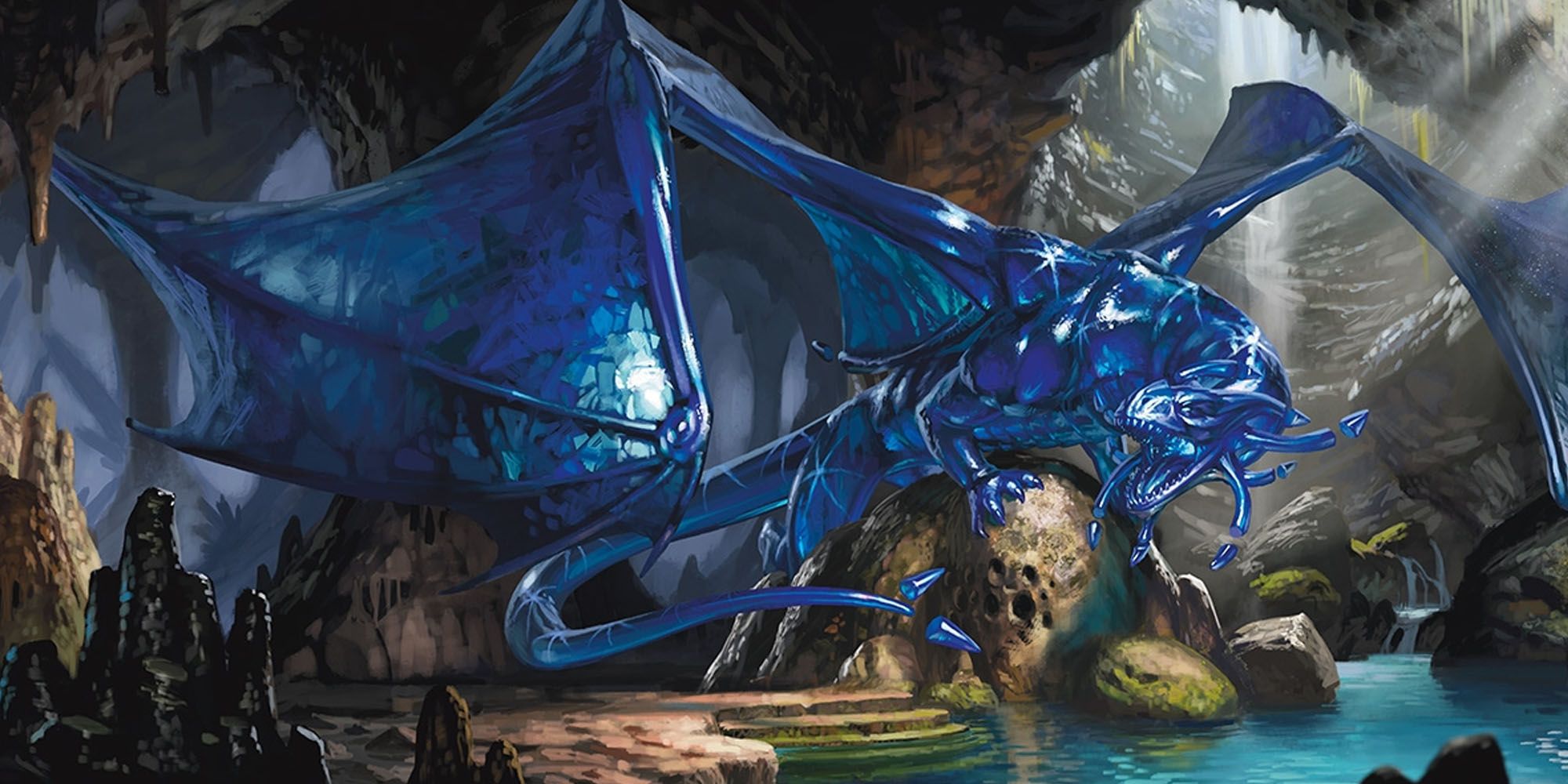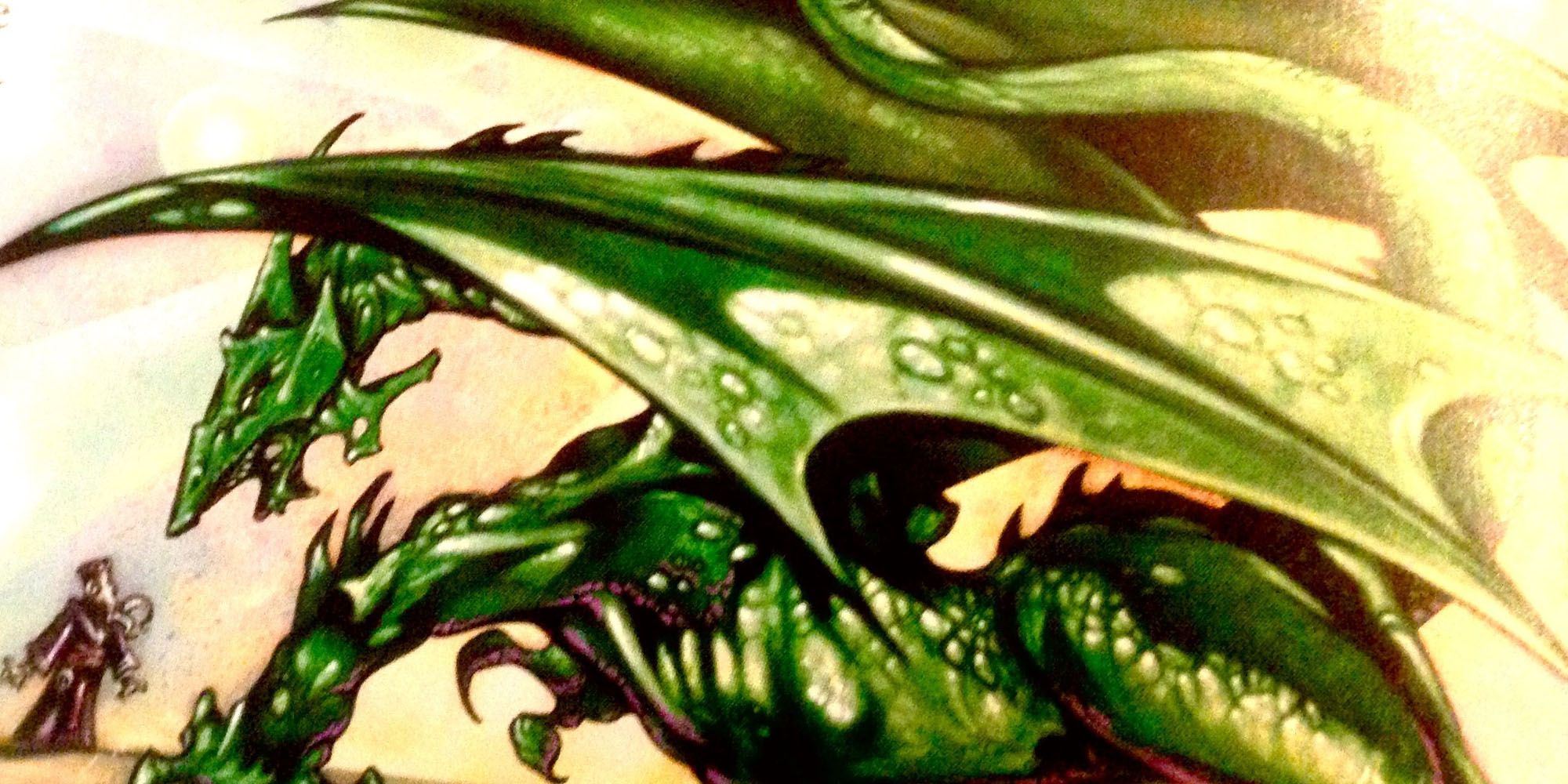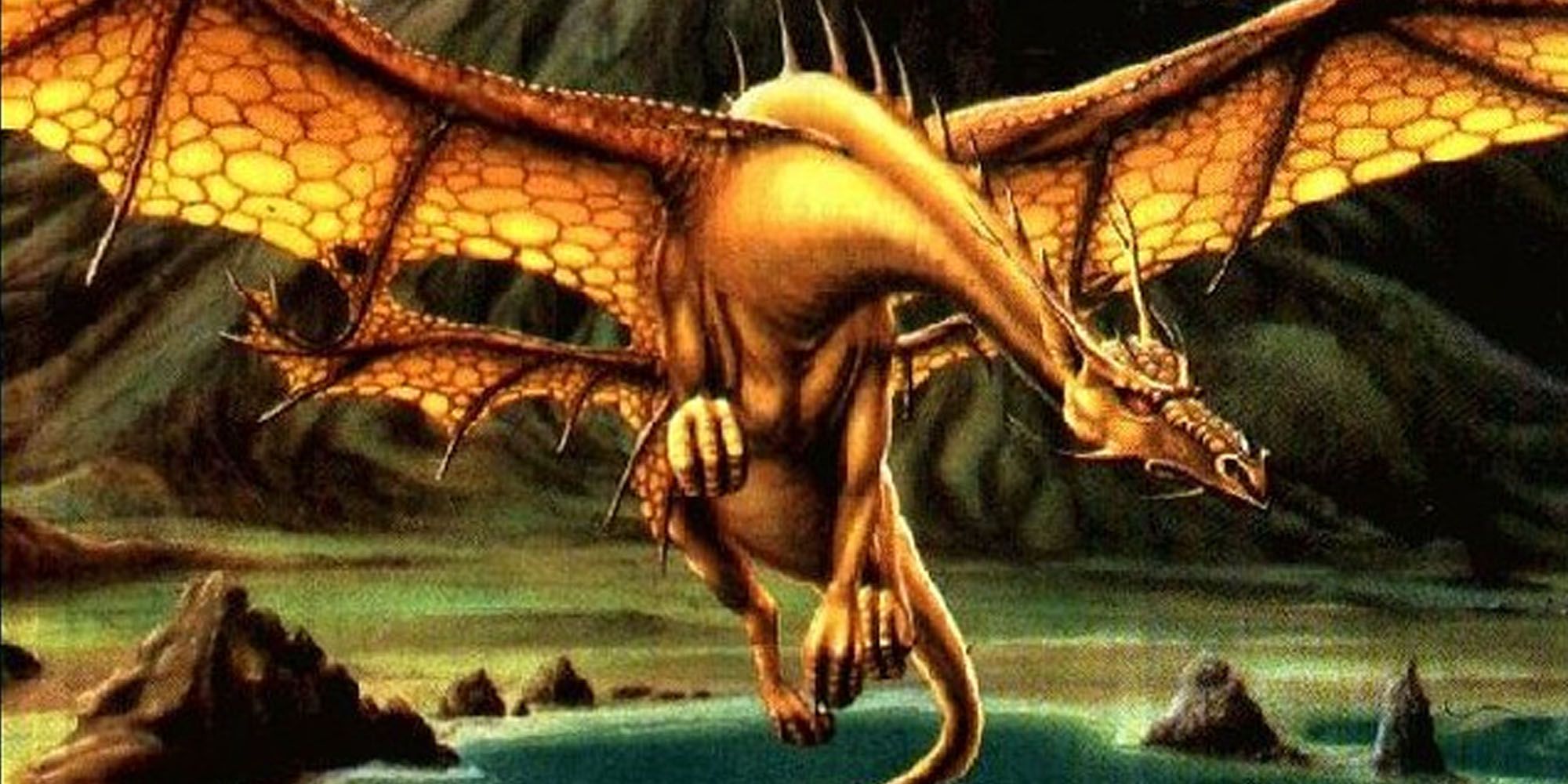One of Dungeons & Dragons' most fearsome and iconic enemies remains the dragon, and no matter which plane the party travels to, there are bound to be dragons to fight. Chromatic and Metallic dragons tend to be the most common, providing balance between good and evil -- but as with everything on the cosmic scale, there's something that lies between the two alignments.
The upcoming sourcebook Fizban's Treasury of Dragons will reintroduce Gem dragons to Fifth Edition, and though they fell primarily into the neutral zone in their Third Edition incarnation, it's likely they will evolve for a new era of D&D. Prior to Fizban's Treasury, the only Gem dragon introduced to 5e was the Sapphire dragon as a special stat block to benefit Extra Life, but the sourcebook will reintroduce five types of Gem dragons last seen in 3e.
One of the most unique characteristics of the Gem dragons are their scales, which have the crystalline appearance of gemstones. They also tend to be psionic, meaning they are great masters of magical abilities of a psychic nature such as telepathy, psychokinesis and clairsentience. Many of them follow Sardior, the Ruby Dragon who is said to live in a floating city made of rubies and gold. Lore claims that Sardior was the first creation of Bahamut and Tiamat, the respective keepers of the Metallic and Chromatic dragons.
Much like Chromatics and Metallics, there are several types of Gem dragons with temperaments ranging from mild and approachable to downright ferocious. While some of them enjoy (and even long for) conversation with intelligent creatures, they tend to be solitary, preferring to maintain their distance from the world and its problems in hopes that the world keeps its distance from them.
The friendliest of the Gem dragons are the Crystal dragons, who make their homes atop snow-covered mountains or in the Elemental Plane of Air. Their preference for these locations often find them at odds with White dragons, who have no qualms about trying to overtake Crystal dragon territory to make it their own. In contrast, Crystal dragons have been known to steal the eggs of White dragons and raise their young to be forces of good in the world.
Amethyst dragons like to burrow, making their dens deep within the ground on the Elemental Plane of Earth. Because they tend to be agreeable, they have been known to intervene between warring dragons and attempt to mediate and make peace for the benefit of all. Despite their agreeability, they like to avoid personal conflict -- which is not to say they won't attack if their lair, eggs or young are in danger. When it comes to a fight to the death, they will flee rather than fight, valuing their own lives above resolution to the conflict.
Intelligence is the forte of the Emerald dragons, who like to make their lairs far from civilization -- often within both active and inactive volcanoes because they know they are safer there. They would make excellent conversationalists if they were more social, but they tend to loom on the paranoid and suspicious side. Despite their wariness and abundant paranoia, they aren't particularly shy when it comes to seeking out and harvesting treasure to build their hoards.
The Topaz dragon is a beauty to behold, its gold and yellow scales gleaming in the abundant sunlight of their preferred beachside lairs in the Elemental Plane of Water. Despite their beauty, they are unpredictable, nasty and ferocious. They may begin a meeting pleasantly enough only to have a single action set them off, turning the tide of friendliness into all-out war.
The one Gem dragon previously introduced in 5e, the Sapphire dragon, is known to make its home on the Material Plane deep below the earth -- the deeper the better, so far as they're concerned. They also dwell within the Elemental Plane of Earth. These great strategizers spend their time weighing out their advantages and plotting victory over their enemies simply because they live for such games. Their ability to shape stone makes it easy for them to maneuver and restructure areas to suit their desires, whether it be to build protection or construct an escape route. The fact that they burrow so deep often puts them in proximity to the Underdark, where the Dark Elves and Mind Flayers find themselves victims to violent wars with the Sapphire dragons.
Additionally, there are the Obsidian and Amber dragons. Obsidian dragons were the most intelligent and dangerous of the Gem dragons back in 3e. They have black crystalline scales, are always neutral evil and tend to live in lairs near volcanos. Meanwhile, Amber dragons were only part of Second Edition, where they were introduced as exceptionally intelligent neutral creatures who tend to live solitary lives roaming the world rather than settling in lairs. However, neither have not been announced for Fizban's Treasury, so it currently seems like they will not be joining the five already announced.



